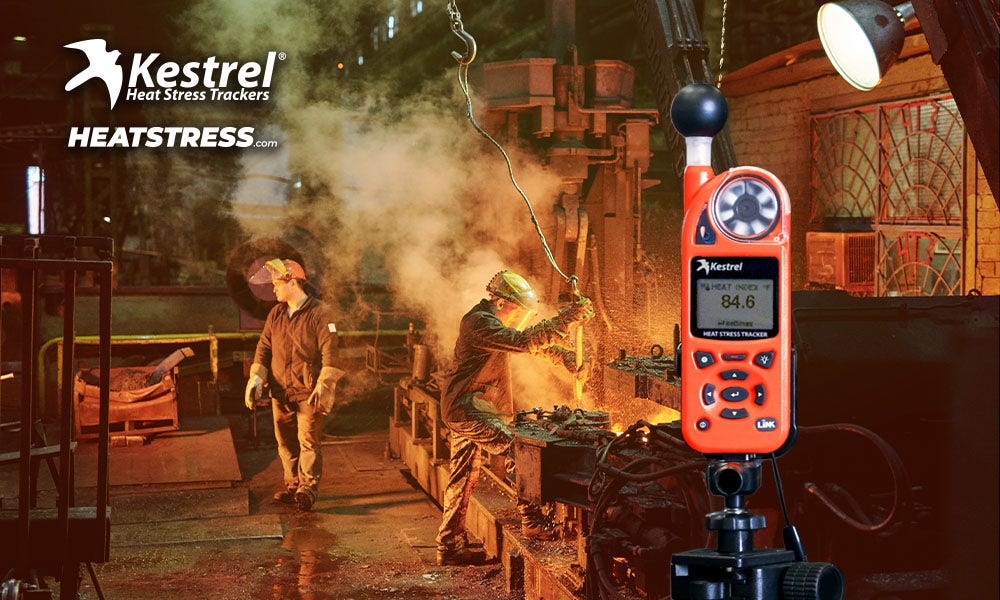Heat Stress Laws & Regulations

Heat stress poses significant risks to health and safety, impacting millions of people globally, especially in occupations and activities involving strenuous physical effort or prolonged exposure to hot environments. As global temperatures rise and extreme heat events become increasingly common due to climate change, there is a growing urgency among various governing bodies to establish and reinforce stringent guidelines and regulations. These efforts aim to effectively protect workers, military personnel, athletes, and other vulnerable populations from severe heat-related illnesses.
The following comprehensive overview explores critical heat stress regulations, the specific responsibilities placed upon employers, clearly defined rights of individuals exposed to heat stress, and recent legislative developments, both within the United States and in the broader international context, to ensure safe environments across industries and activities.
OSHA Guidelines on Heat Stress
The Occupational Safety and Health Administration (OSHA) does not have a specific federal heat stress standard. Still, it enforces heat safety through the General Duty Clause, requiring employers to provide workplaces free from recognized hazards, including excessive heat exposure.
OSHA recommends the following proactive strategies to mitigate heat stress:
- Implementing Heat Illness Prevention Plans
- Providing sufficient access to water, rest, and shade
- Training workers on heat illness prevention
- Adjusting work schedules to cooler times
- Regular monitoring of environmental conditions using tools like Wet Bulb Globe Temperature (WBGT) meters
OSHA also advocates for acclimatization programs to help workers adapt to high-heat environments gradually.
State-Specific Heat Protection Laws
Several U.S. states have enacted specific heat stress regulations. These state-specific regulations often set precedents that other states and federal agencies reference when formulating new guidelines.
California
Cal/OSHA mandates that employers have a Heat Illness Prevention Plan, provide water, shade, and rest breaks, and implement emergency response procedures when temperatures exceed 80°F.
Washington State
In Washington, employers must monitor temperature conditions, ensure adequate hydration and rest periods, and implement heat illness prevention training for workers.
Oregon
Oregon enforces temporary emergency heat rules, including mandatory breaks, access to cool water, and shaded areas.
Minnesota and Maryland
Maryland and Minnesota have workplace standards for training, protecting, and managing heat-related risks.
Department of Defense Heat Stress Guidelines for Military Personnel
The U.S. Department of Defense (DoD) maintains rigorous standards to manage heat stress risks for military personnel:
- Heat Acclimatization Protocols: Mandatory acclimatization periods for personnel deploying or training in hot environments.
- Work-Rest Cycles: Defined work-to-rest ratios based on WBGT readings.
- Hydration Protocols: Strict hydration policies, including regular fluid intake.
- Heat Stress Monitoring: Comprehensive use of environmental monitoring tools to determine heat risks and enforce protective measures.
These guidelines are critical for ensuring military readiness and protecting personnel during strenuous training or combat operations in extreme heat.
NCAA & Professional Sports Heat Stress Protocols
Sports organizations like the National Collegiate Athletic Association (NCAA) and professional sports leagues have specific heat safety protocols to protect athletes. These protocols emphasize athlete health and safety, ensuring performance and reducing the risk of heat illnesses.
NCAA Guidelines
The NCAA mandates regular heat stress monitoring, hydration breaks, and cooling measures during practices and competitions, especially when WBGT reaches critical thresholds.
NFL and Other Pro Leagues
The National Football League (NFL) employs heat management policies, including temperature monitoring, mandatory rest and hydration breaks, and player health education to prevent heat-related incidents.
Global Heat Stress Standards (EU, Australia, etc.)
Internationally, several organizations and regions have developed specific heat stress guidelines:
- European Union: The EU Framework Directive requires employers to identify, assess, and mitigate risks from heat stress. Member states may have additional specific standards, such as mandatory breaks and monitoring.
- Australia: WorkSafe Australia provides extensive heat management guidelines, emphasizing employer responsibility for risk assessment, hydration, and worker education. Australia's extreme heat conditions make these guidelines particularly comprehensive.
- ISO Standards: The International Organization for Standardization (ISO) maintains standards such as ISO 7243 for assessing thermal environments using the WBGT index, guiding employers globally on heat exposure management.
Employer Responsibilities Under the Law
Employers have a legal responsibility to protect workers from heat stress by:
- Conducting risk assessments for heat exposure
- Implementing comprehensive heat stress management plans
- Providing adequate resources for hydration, cooling, and shaded rest areas
- Training workers about heat risks and emergency response procedures
- Monitoring environmental conditions regularly to adjust work activities appropriately
Failure to comply with these responsibilities can result in legal liabilities and penalties, as well as increased risks of workplace accidents and health incidents.
Worker & Athlete Rights for Heat Protection
Workers and athletes have specific rights concerning heat stress protection, including:
- The right to a safe and healthy work or athletic environment
- Access to drinking water, shaded rest breaks, and appropriate medical interventions
- The right to voice concerns regarding unsafe heat conditions without fear of retaliation
- Receiving education and training on recognizing and preventing heat-related illnesses
Understanding and asserting these rights ensures that individuals can actively participate in their health and safety management.
Recent Legislative Updates & Pending Bills
Heat stress legislation continues to evolve, reflecting increased awareness and concern over climate change and extreme weather:
- Federal Initiatives: Efforts are underway in the U.S. Congress to pass a federal heat standard requiring OSHA to establish enforceable regulations specific to heat exposure.
- State-Level Developments: Multiple states, including New York and Nevada, are considering comprehensive heat stress bills mandating employer action plans and protection standards.
- International Trends: Globally, many countries are expanding existing legislation and standards in response to heat waves' increased frequency and intensity.
These legislative efforts aim to strengthen protections against heat-related risks and ensure consistent standards across industries and regions.
Importance of Ongoing Compliance and Future Preparedness
Adhering to heat stress laws and regulations protects health, ensures legal compliance, and enhances productivity across workplaces, athletic settings, and military operations. With rising global temperatures and increasing frequency of extreme heat events, continuous assessment and improvement of heat stress management practices are essential.
Employers and organizational leaders must remain proactive, regularly updating policies and training programs to reflect current research and legislative changes. Fostering a culture of awareness and responsiveness to heat-related risks can significantly reduce incidents and health complications. Staying informed about evolving legislation and standards will be critical for effectively managing heat-related risks and safeguarding individuals in increasingly challenging thermal environments.





